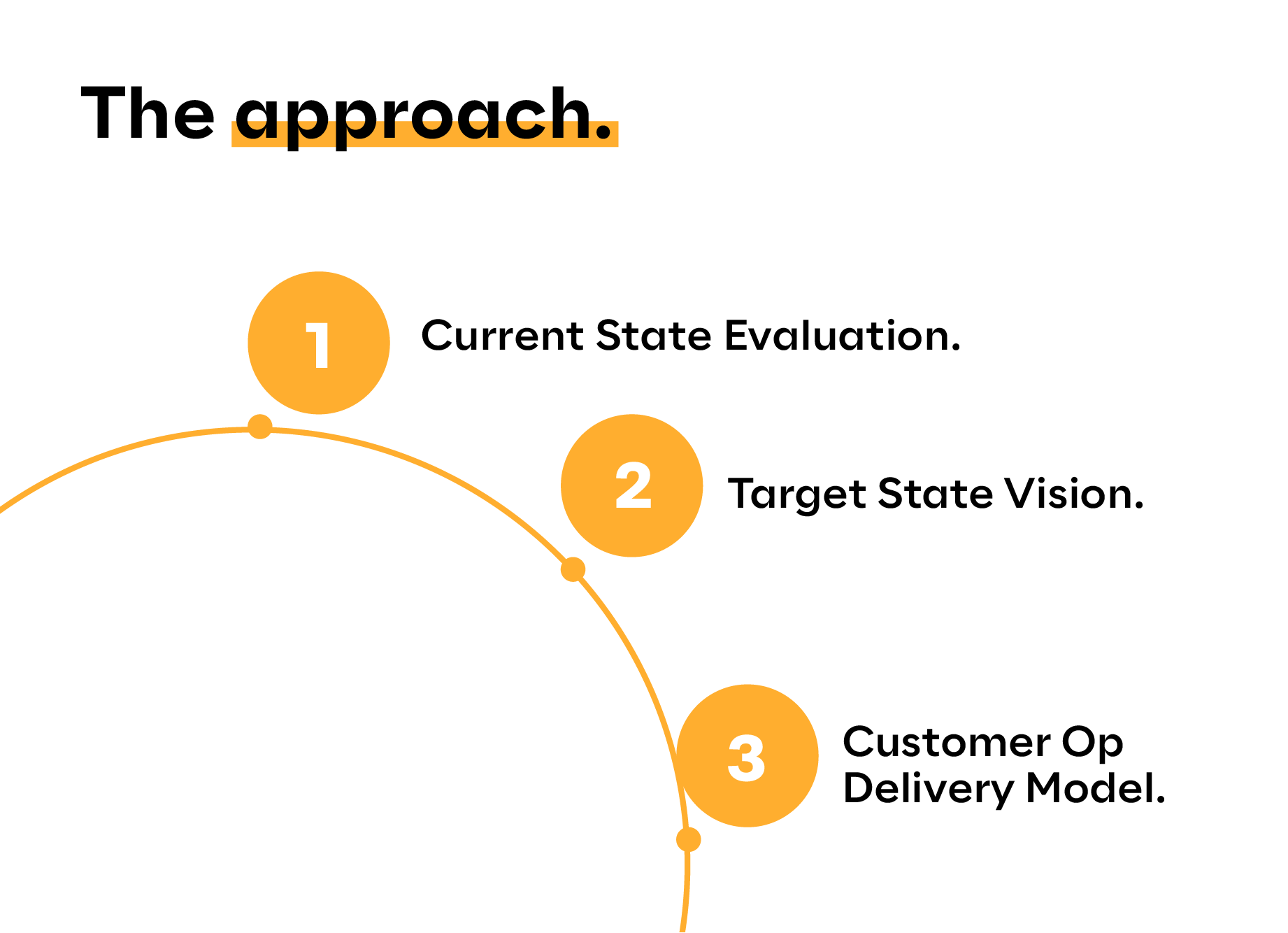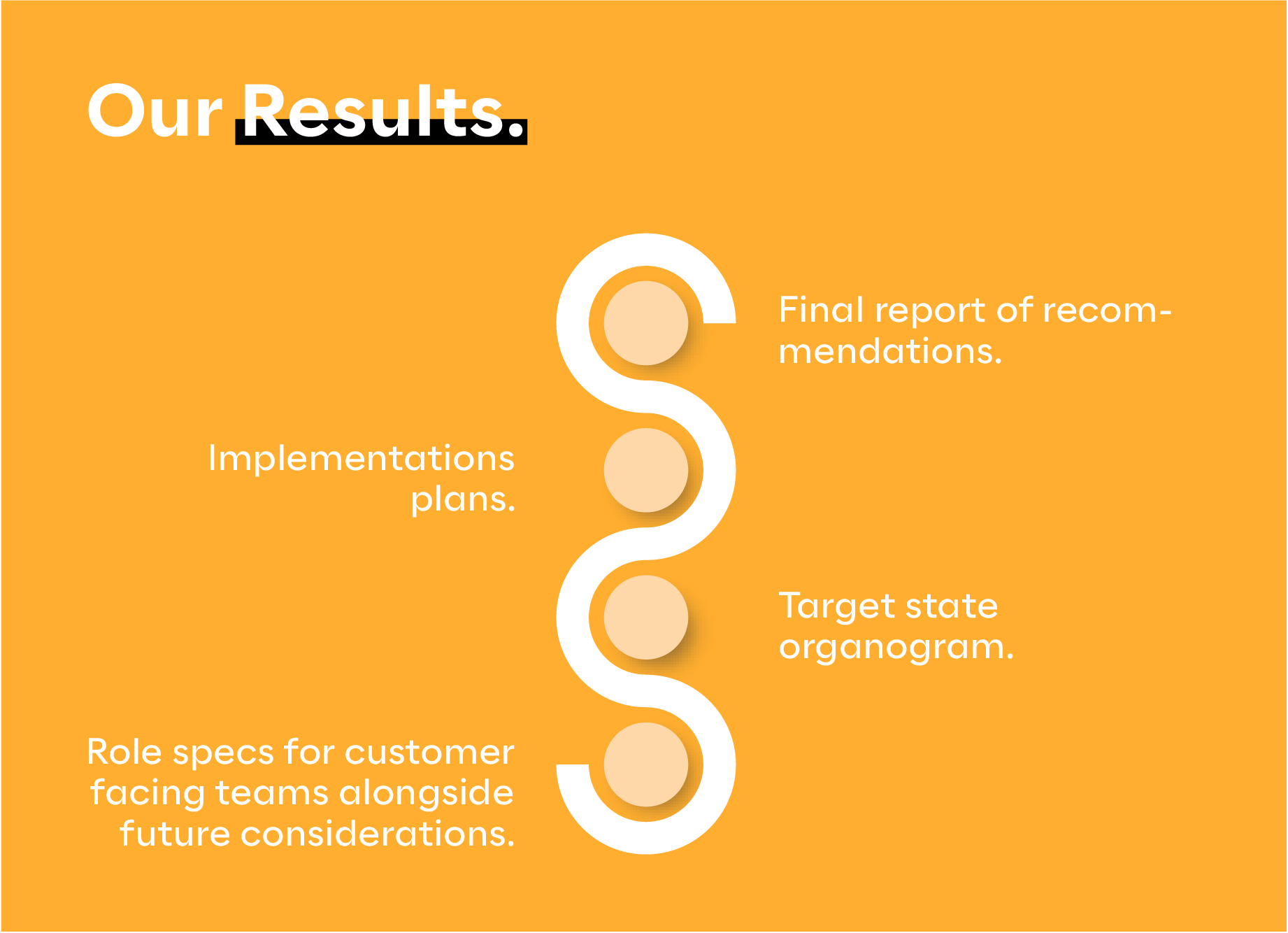The challenge
The client was experiencing a successful period of growth and wanted the customer to remain at the heart of their business activities and decision-making processes. To continue their growth trajectory, they were shifting from a predominantly service-based business model to a more tech-enabled offering, delivered through the launch of a new digital platform. To enable this transformation, they understood that new approaches and controls would be required to ensure the customer remained central throughout this scaling period.
Whilst this is a common problem in many growing companies, it can be difficult to build a channel for regular, open, and objective customer feedback and opinion that is structured, scalable and action-oriented – therefore, they sought help in developing this transition.
The approach
A modular approach was taken to break the project down into 3 clearly defined sprints to serve the 4 key focus areas across a 4-month timeframe.
- Current State Evaluation: Conduct a number of stakeholder and customer interviews to identify the current strengths, challenges and opportunities present within the current customer experience.
- Target State Vision: Determining a clear and quantifiable view of the future customer experience - with the tools and process required to enable the recommendations:
- Future customer journey experience (Customer journey framework)
- Customer experience measurement (Voice of the Customer framework)
- Customer Operations Delivery Model: Providing a clear, customer-centric operating model to facilitate customer-led growth.


The results
After conducting interviews with 32 staff members and 11 customers from 9 different accounts, a comprehensive discovery report was produced. This report identified several emerging themes, which were then transformed into 9 aspirations to guide the project's remaining deliverables.
Based on these aspirations, the project transitioned into two targeted workstreams. Through a series of workshops involving relevant stakeholders at different stages of the customer lifecycle, 4 customer journeys were defined. Additionally, various customer experience measurement tools, such as a customer pulse and scorecard design, were developed to effectively capture the voice of the customer.
By consolidating early findings and outputs, a set of recommendations was outlined, resulting in the following outputs:
- A final report containing recommendations and implementation plans.
- An organogram for the target state, including role specifications for customer-facing teams. It also incorporated future considerations for long-term strategy.
The findings and recommendations have provided a valuable foundation for a structured and scalable roadmap. This roadmap incorporates clear objectives and key results (OKRs), which serve as effective tools for goal-setting and leadership. It enables effective communication of what needs to be accomplished, including important milestones, as part of the client's ongoing efforts to implement their customer-centric strategy.
These insights and tools have laid a strong groundwork for the next phase of their customer-focused initiatives.
